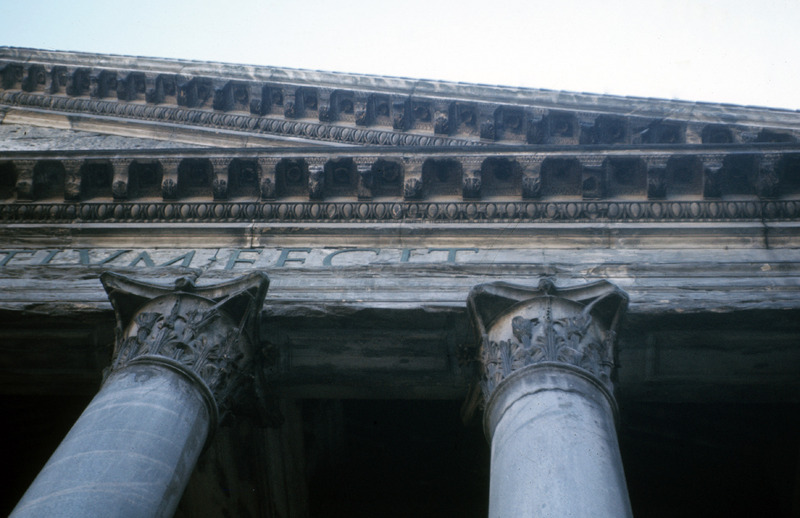Pantheon
Item
- Title
- Alternative Title
- City
- Address
- GPS
- Country
- Date Created
- Century
- Classification
- Building Type
- Style/Period
- Cultural Context
- Materials
- Subject
- Description
- Source
- Photographer
- Rights Holder
- Access Rights
-
Pantheon
-
Santa Maria ad Martyres
-
Rome, Roma, Italy
-
Piazza della Rotonda, 00186 Roma RM, Italy
-
41°53'55.0"N 12°28'36.6"E
-
Italy
-
begun in 27 BCE, completely rebuilt 118/119-125/128
-
1st Century BCE
-
2nd Century
-
Architecture and City Planning
-
Ancient Roman
-
Italian
-
stone
-
brick
-
concrete
-
aggregate
-
columns
-
pediment
-
scripture
-
exterior view, detail view of entrance portico
-
The Pantheon was dedicated to the seven planetary gods in 128 CE. It was consecrated as a church in the early seventh century. It is the major surviving example of Roman concrete vaulted architecture. It is composed of a domed rotunda attached to a columned entrance portico. Now free-standing, it was originally the focal point of a long, porticoed forecourt.
-
M•AGRIPPA•L•F•COS•TERTIVM•FECIT (Marcus Agrippa, son of Lucius, made this building when consul for the third time)
-
Commissioned by Marcus Agrippa (that building destroyed, but referenced in the inscription), and completely rebuilt by Emperor Hadrian ca. 118-125 CE. The building is circular with a portico of large granite Corinthian columns (eight in the first rank and two groups of four behind) under a pediment. A rectangular vestibule links the porch to the rotunda, which is under a coffered, concrete dome, with a central opening (oculus of 8.15 m diameter) to the sky. Almost two thousand years after it was built, the Pantheon's dome is still the world's largest unreinforced concrete dome. The height to the oculus and the diameter of the interior circle are the same, 43.3 meters (142 ft). It is one of the best preserved of all Roman buildings. It has been in continuous use throughout its history, and since 609, the Pantheon has been used as a Roman Catholic church dedicated to St. Mary and the Martyrs (Santa Maria ad Martyres) but informally known as "Santa Maria Rotonda."
-
Michael Peters
-
Michael Peters
-
© Michael Peters
-
© Texas Tech University Libraries
-
Users must request permission from the copyright holder for all use in publications, including theses and dissertations.
- Item sets
- Michael Peters Collection
“Pantheon”, Arch Design Images, accessed December 28, 2025, https://exhibits.lib.ttu.edu/s/archlib/item/44576


